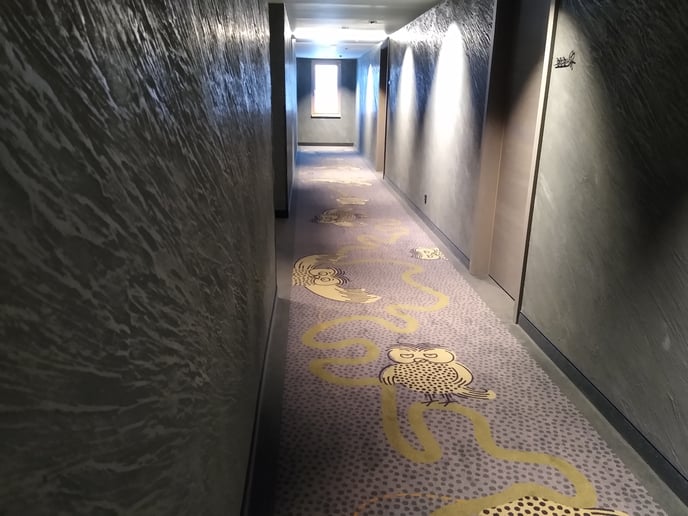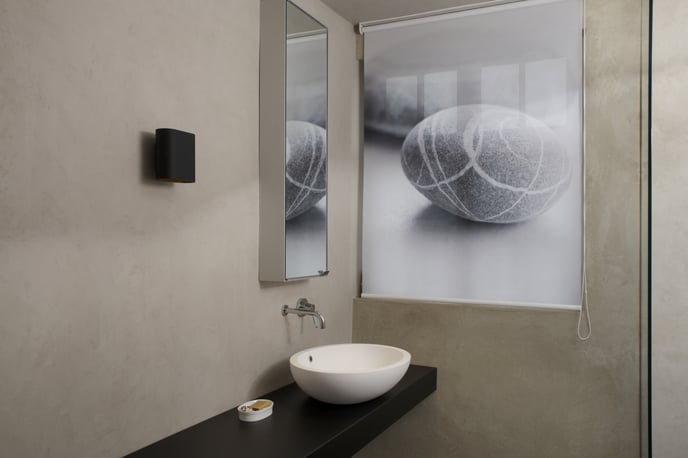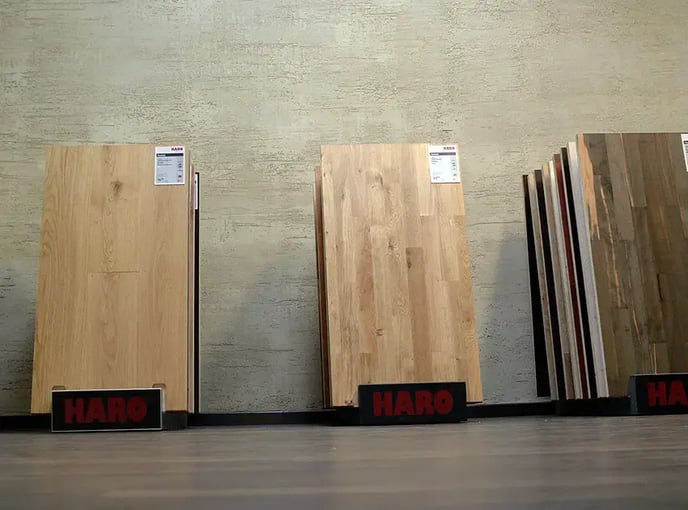This article shows you how to use Terrastone to create surfaces with different looks and textures.
Due to their unique composition, Terrastone plasters create individual surfaces with different looks and textures when processed in different ways. Whatever you like is just fine! Nevertheless, we would like to introduce the classic options to you here.
The following generally applies to Terrastone Original, Terrastone Original Fine and Terrastone Rustique.
Terrastone Original:
The classic version
%20020.jpg?width=688&height=516&name=2023-09%20HofArt%20in%20Landsberg%20(VH)%20020.jpg)
In the first step, Terrastone is applied with a so-called Venetian trowel in a so called "archaic" way. Archaic in this case means that the application is done crosswise so that no uniform application direction can be seen. The layer thickness is determined here by the mineral mica contained in the mixture. After a short drying time, which varies according to temperature and humidity, Terrastone is smoothed with the Venetian trowel. Here, the trowel is held as flat as possible and pulled "archaically" over the Terrastone with gentle pressure. This process is repeated, using increased pressure while smoothing, once or twice after further drying cycles. After the drying is complete, the surface can be lightly sanded with hand sandpaper with a grit between 120 and 180. classic version
The lifted version
The material is mixed a little creamier and applied a little thicker.
Immediately afterwards, the Venizian trowel is placed flat on the material and plucked up.
If you want a surface like the one in the picture, you have to pull the trowel in one direction.
Then allow the material to set for 30-40 minutes and then start smoothing.
The trowel is held as flat as possible and pulled over the Terrastone with gentle pressure in the desired direction. This process is repeated once or twice after further short drying times and increasing pressure when smoothing.
By smoothing only the lifted material, the desired surface is created.
After complete drying, the surface can be lightly sanded with hand sandpaper with a grain size between 120 and 180.
Terrastone Original Fine:
 Terrastone Original Fine is generally processed like Terrastone. The difference lies in the lower layer thickness, which is due to the absence of the mineral mica. In addition, Terrastone Fine can be beautifully polished with 400-grit hand sandpaper after drying.
Terrastone Original Fine is generally processed like Terrastone. The difference lies in the lower layer thickness, which is due to the absence of the mineral mica. In addition, Terrastone Fine can be beautifully polished with 400-grit hand sandpaper after drying.
Terrastone Rustique:
There are three processing techniques for Terrastone Rustique:
Smoothed Look%20084.jpg?width=688&height=516&name=2023-09%20HofArt%20in%20Landsberg%20(VH)%20084.jpg)
Here Terrastone Rustique is applied like Terrastone or Terrastone Fine and is smoothed. However, due to its higher coarse mineral and mica content, much more vivid surfaces are created.
Travertine Look

In this case, Terrastone Rustique is applied vertically with a Venetian trowel or a stainless steel smoother. After a short intermediate drying period, a double-bladed trowel is used, working in a vertical direction. The traces of coarse materials from Terrastone Rustique removed by this process provide a look reminiscent of travertine. The next day, the mica can be gently sanded free using hand sandpaper with 120 to 180 grit.
Shell Limestone Look

Here, in contrast to the travertine look, the application and post-modeling is done "archaically". Archaic means that the application is carried out in a crisscross pattern so that no uniform application direction can be seen. Otherwise, this processing is similar to processing used to achieve a travertine look.
